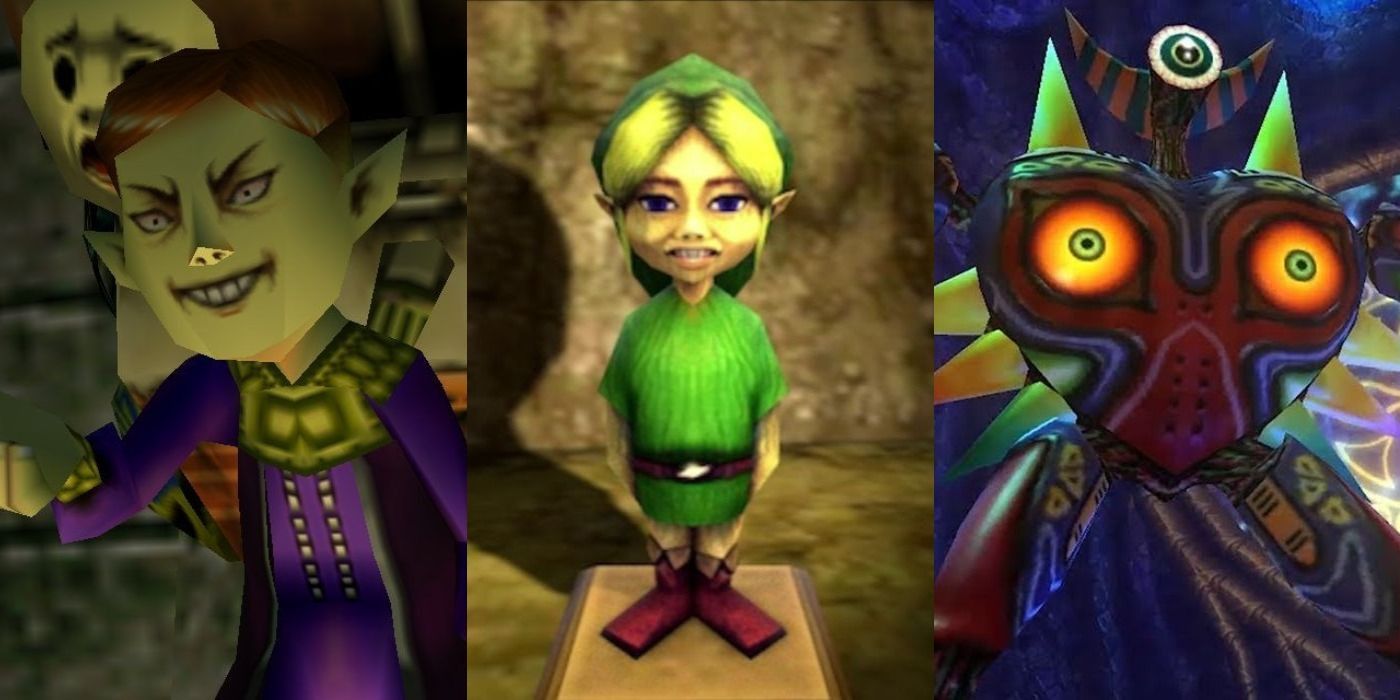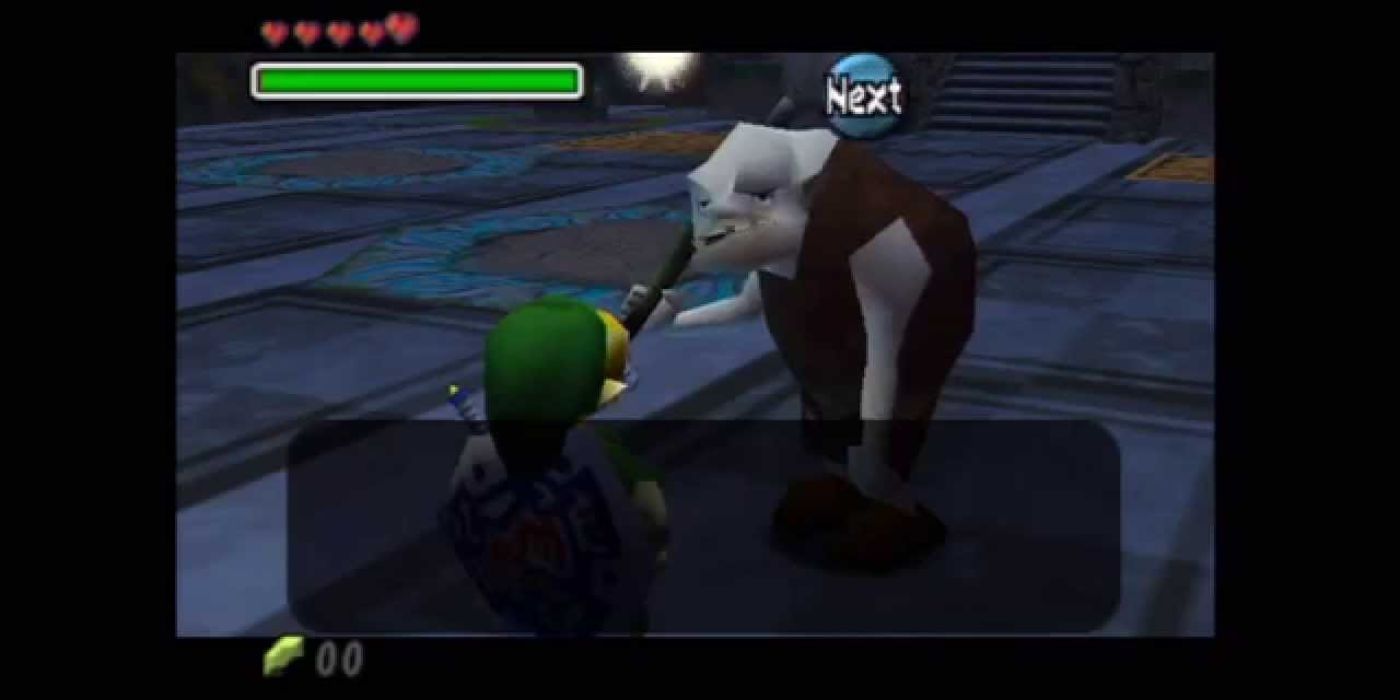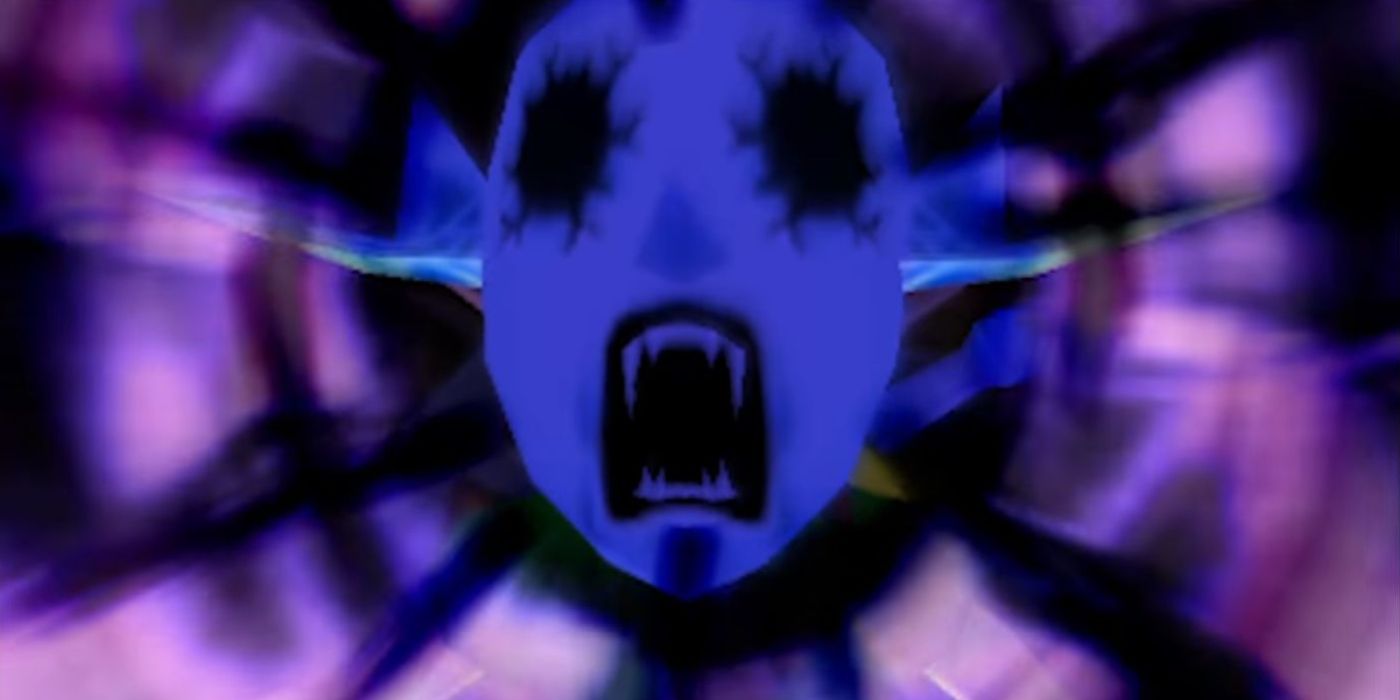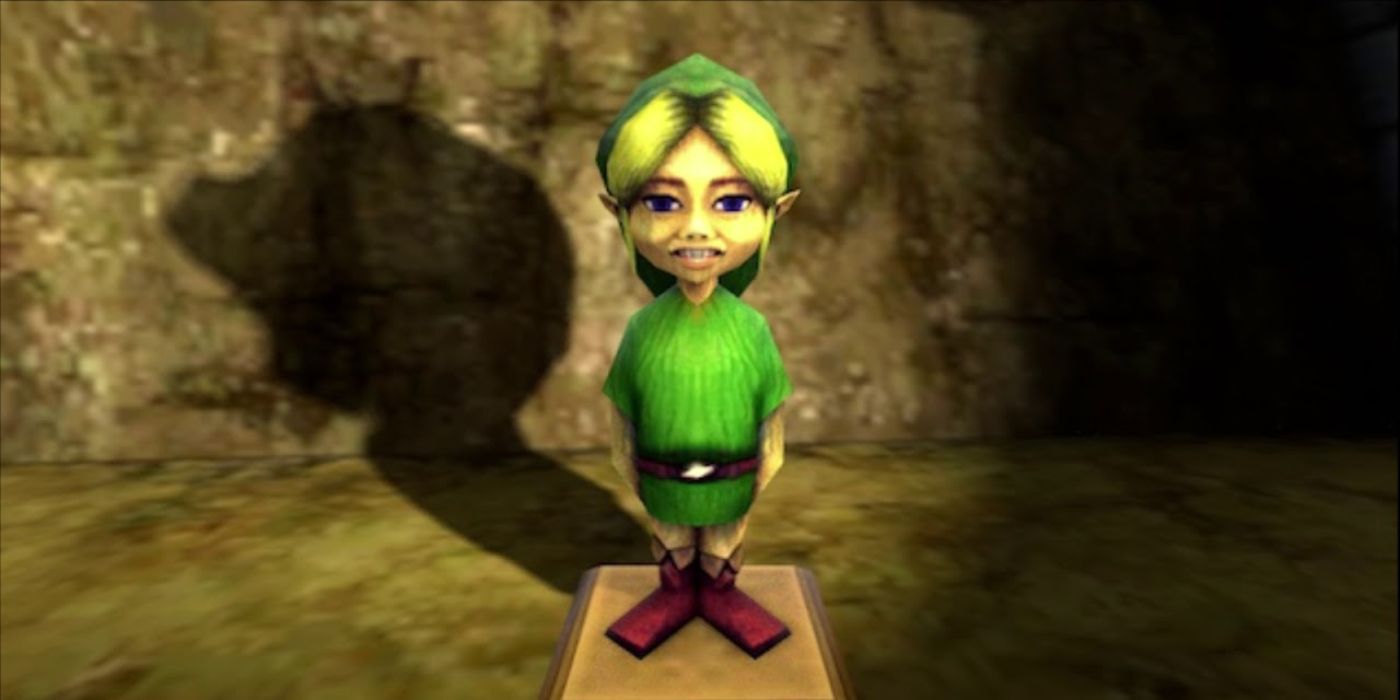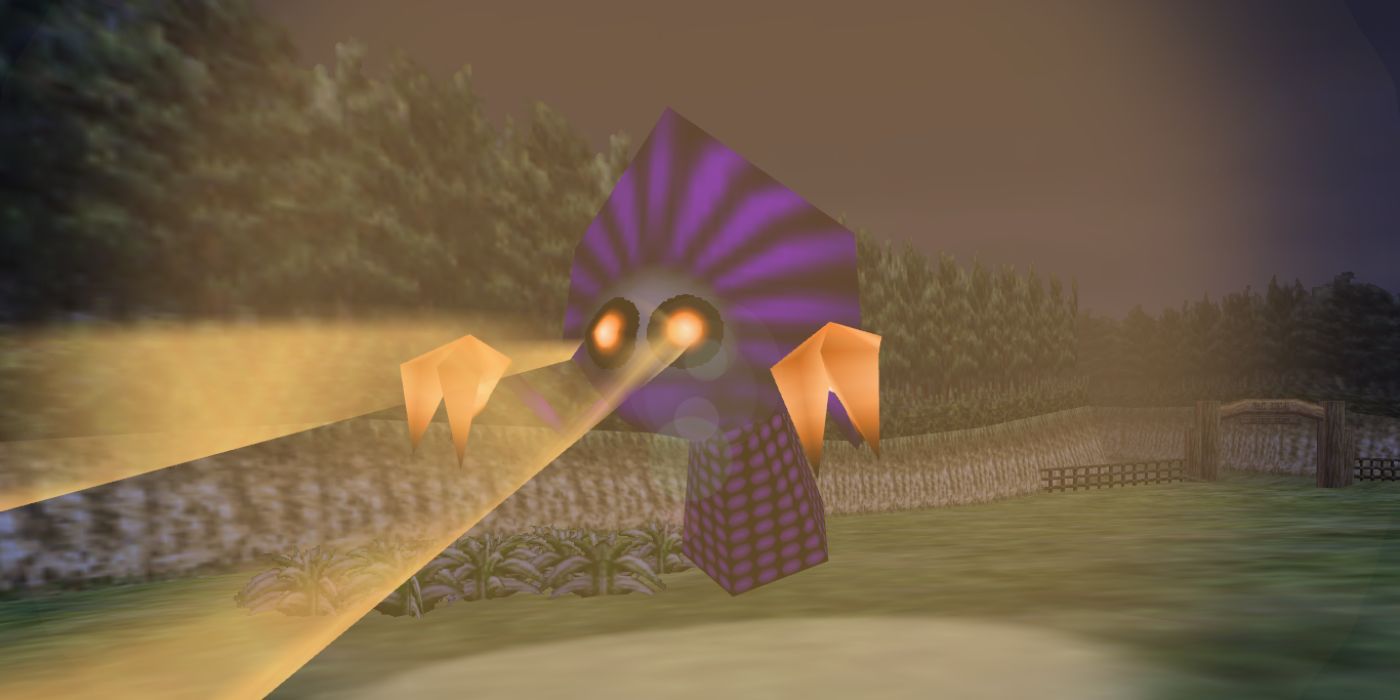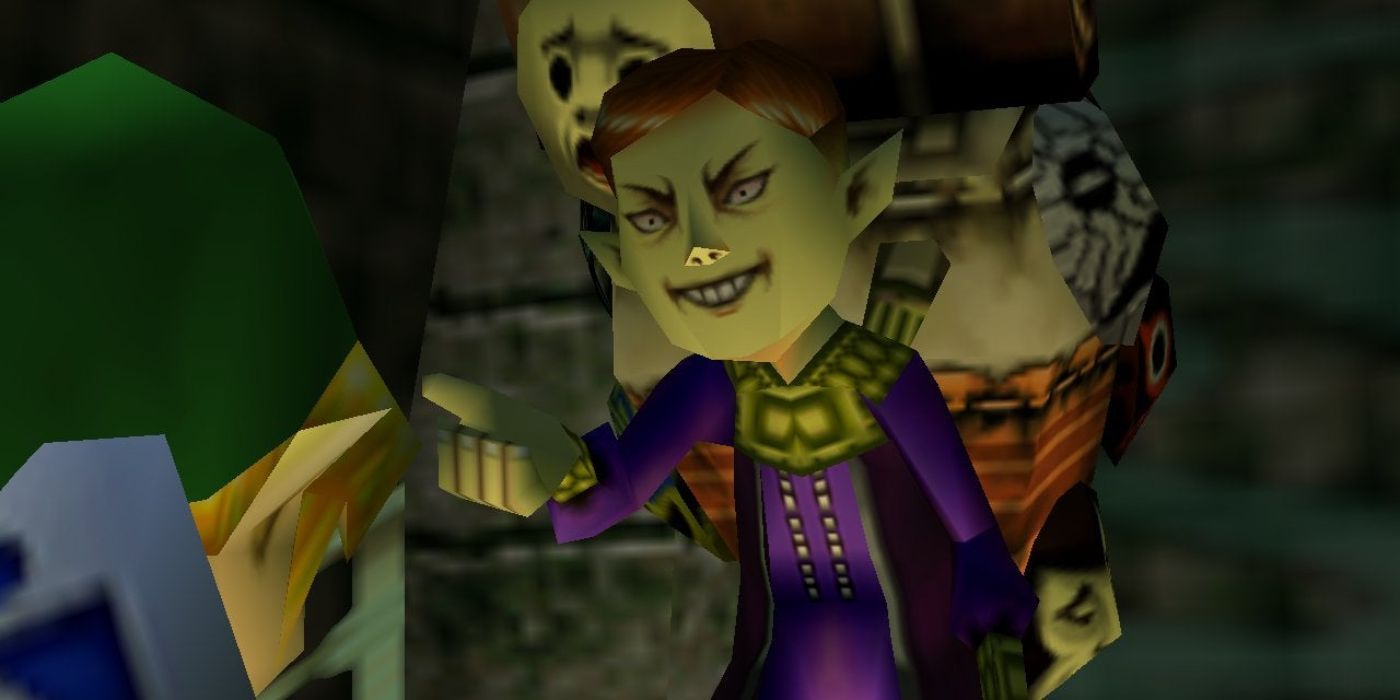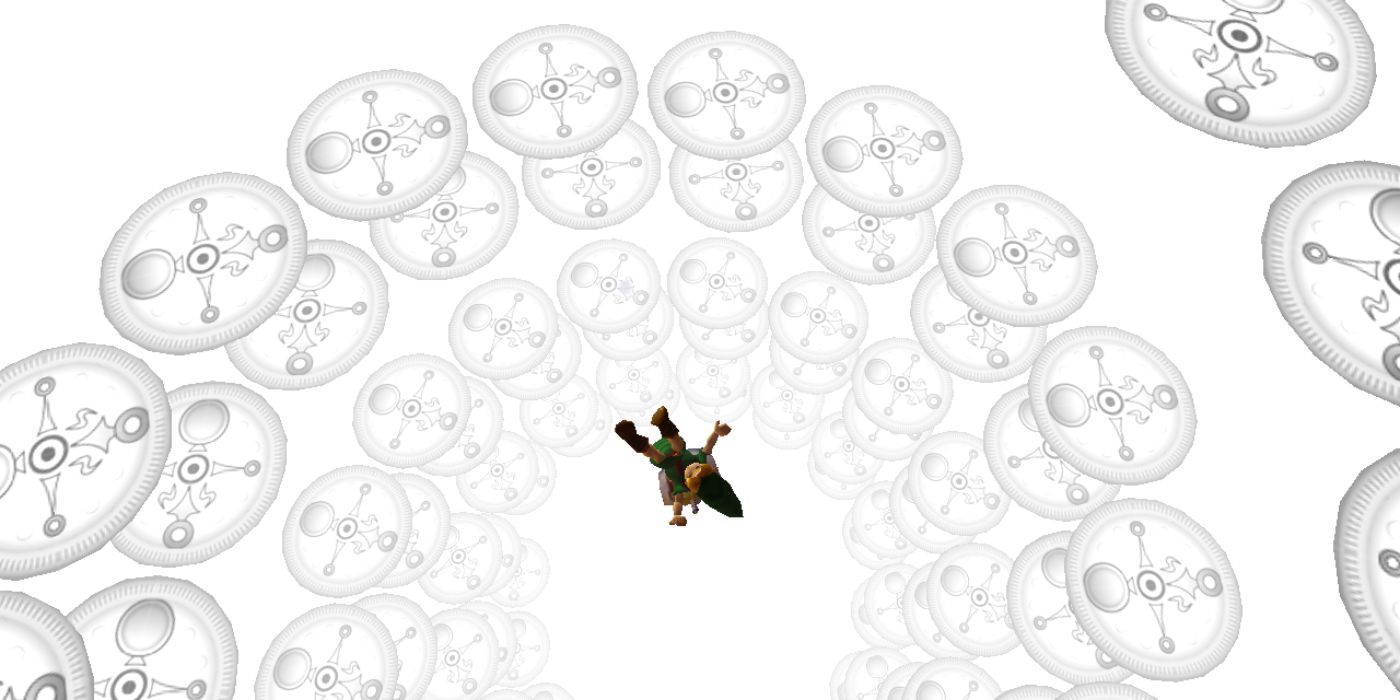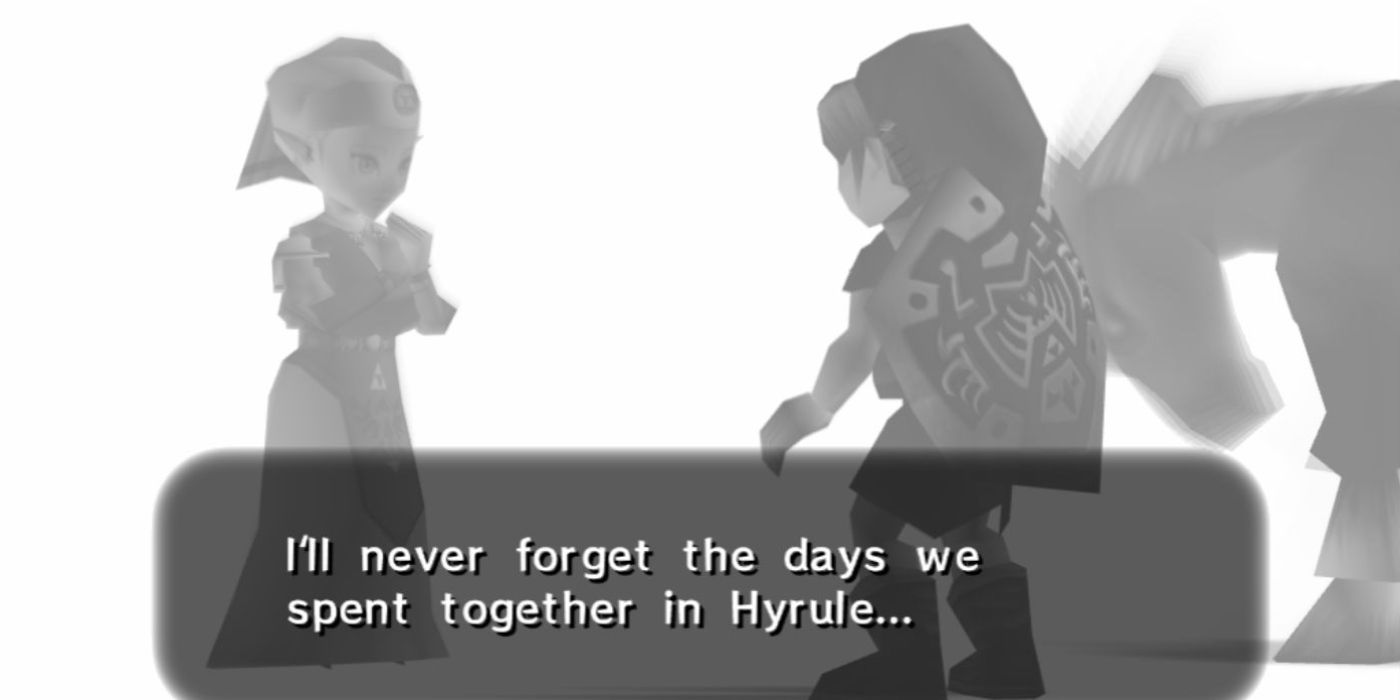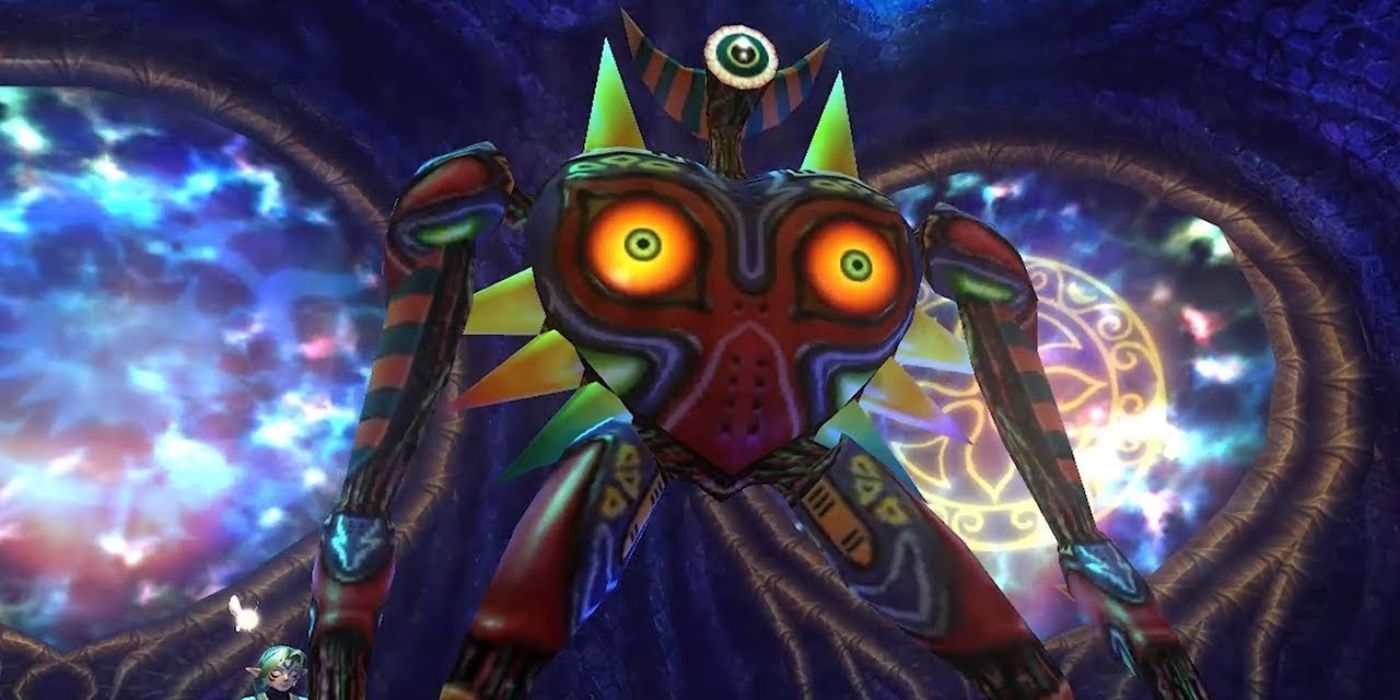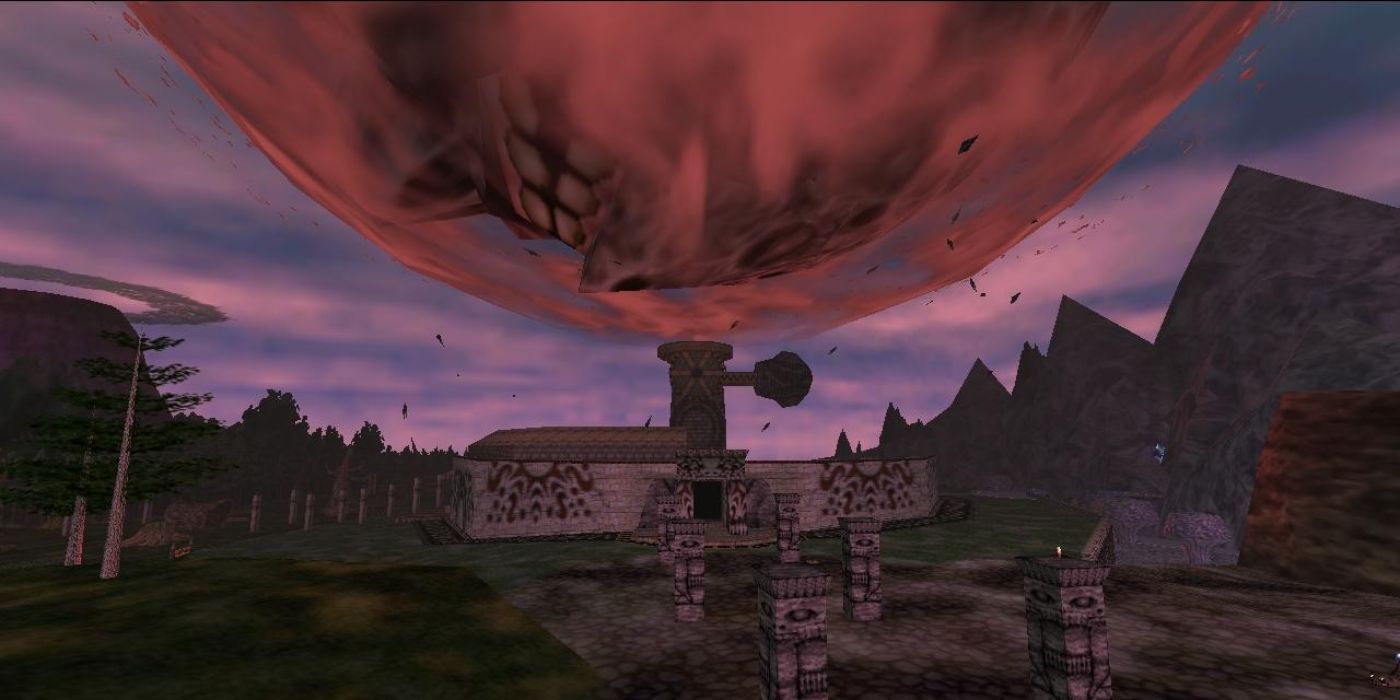As the sequel to 1998's award-winning classic game The Legend of Zelda: Ocarina of Time, Majora's Mask had large shoes to fill. Expectations could not have been higher after Ocarina's success, yet Majora's Mask rose to the challenge and received near-universal acclaim upon its release.
Despite this, the game can generously be described as one of the quirkier games in the franchise, featuring gameplay mechanics found in no other Zelda title and a uniquely dark story that has spawned some of the franchise's most enduring memes and subcultures. From the game's music and design choices to its unusually lore-driven story, Majora's Mask stands proudly apart from its peers as a strange and memorable entry into the franchise.
Duplicate Character Models
Though the game features upgraded graphics, Nintendo reused numerous character models from Ocarina of Time. Kakariko Village's Cucco Lady became Anju, the owner of Clock Town's inn, Malon became Romani, and the nameless Beggar of Hyrule became the nameless Banker of Termina. While the Happy Mask Salesman's appearance is addressed in the game's narrative, the inexplicable appearance of so many of Hyrule's NPCs in Termina gives the game an eerie dreamlike quality.
Majora's Mask was released only two years after Ocarina of Time so it's understandable that Nintendo would reuse certain virtual assets in their sequel. The extensive degree of usage, however, may suggest an intentional design choice that adds to the cognitive dissonance in Majora's Mask, even contributing to a fan-favorite Legend of Zelda theory that Link is dead during the events of the game.
Each Mask Transforms You Into A Dead Character
One of Majora's Mask's central gameplay mechanics involves transforming into one of several non-Hylian species. At the time of its release, it represented a dynamic and new addition to the Zelda franchise that gave the player additional gameplay-enriching abilities, such as deft swimming with the Zora Mask and high-speed rolling with the Goron Mask. Something the game never addresses directly, however, is that each of these transformative masks is created from a dead character -- specifically Mikau the Zora, Darmani the Goron, and the unnamed Deku Butler's Son.
Each of these characters meets a tragic end during the course of Majora's Mask, and Link, using a song taught to him by the Happy Mask Salesman, transforms their departed souls into magical masks. Link's transformation animations are each accompanied by a scream of agony and a uniquely twisted expression that appears on the mask, adding another unsavory layer to this unsettling gameplay mechanic.
The Elegy of Emptiness
In Ikana Canyon, Link learns the morosely named Elegy of Emptiness. This song allows Link to create a statue of himself that can depress switches and help solve assorted dungeon puzzles. What's most remarkable about this is the strange aesthetic used for this statue. It looks remarkably unlike Link, featuring a blank, unblinking stare and a grimace that barely passes as a smile.
The utter creepiness of this figure helped inspire Alexander D. Hall's acclaimed creepypasta Ben Drowned -- a multimedia pseudodocumentary and alternate-reality game that chronicled a fictional account of a copy of Majora's Mask haunted by the spirit of a deceased child. No other Zelda game comes close to inspiring this level of creepy creativity, and it stands as a testament to Majora's Mask's unparalleled strangeness.
There's An Alien Abduction Side Quest
There's no shortage of unusual side quests in Majora's Mask, but the absolute strangest has Link protect a cattle ranch from an extraterrestrial invasion. In a game with an anthropomorphized moon inhabited by "Moon Children," it's perhaps not surprising that Majora's Mask would feature additional astronomical themes.
Yet this side quest is surprisingly dark, featuring ghost-like aliens known only as "Them," which relentlessly try to steal the precious Romani milk cows. If the player does not or cannot yet intervene, Romani herself will be abducted, only to reappear a day later with no memory of the incident. It's a dark subplot that sees no narrative resolution, ranking it among the strangest occurrences in the entire Legend of Zelda series.
The Happy Mask Salesman
A recurring character from the Legend of Zelda series, the Happy Mask Salesman earns the rare distinction of a starring role in Majora's Mask. It is he who formally introduces players to the dark lore surrounding the cursed mask and sets them on their quest to save Termina. But something is not quite right about this mercurial figure. Among other disturbing characteristics, the Happy Mask Salesman seems far more concerned with recovering his stolen mask than the imminent destruction of the world.
At the game's conclusion when it is revealed that the mask has lost its evil power, the salesman almost seems disappointed before he disappears into thin air. Due to a similarity in the tone of their laughter, some have even suggested that the Happy Mask Salesman is a disguised form of classic Zelda antagonist Vaati, though this -- like much of Majora's Mask lore -- remains unanswered and shrouded in mystery.
It Occupies A Pocket Timeline
Time travel shenanigans have become a staple in Legend of Zelda titles post-Ocarina, but none is so strange as Majora's Mask. As the central conceit of the game involves constantly rewinding time over the course of three days, none of the events of these repeated days actually happen outside of Link's experience. Every dungeon conquered, every side quest completed, every enemy slain -- it all resets whenever Link plays the Song of Time to return to the Dawn of the First Day.
Thus, at the game's true conclusion, anything not completed in the last three in-game days does not technically occur within the canonical Legend of Zelda timeline. It's this gameplay mechanic that makes Majora's Mask one of the hardest Zelda games to 100% complete and which adds a sense of existential futility to the game's story.
The Legend Without Zelda
New players would be forgiven for being especially confused as to how Majora's Mask can be classified as a Zelda game. Despite being a member of the Legend of Zelda series, the eponymous Princess of Hyrule is absent from Majora's Mask except for a brief flashback that lasts less than two minutes of the game's twenty-seven hours of gameplay time.
Given the volume of departures from the greater franchise that Majora's Mask features, it's difficult to say how much Zelda's near-total absence impacts the overall game. It is clear, however, that the lack of focus on this storied fan-favorite character adds to the overall alienating effect that Majora's Mask imparts to franchise veterans and new players alike.
Majora Is Terrifying
In the early game, the mask is presented as a cursed object that can possess its wearer but later encounters show that it is something far more sinister than its lore suggests. In the final boss fight, the player is transported to an otherworldly arena where the creature's true form is finally revealed -- an organic tentacled demon that looks like something from the work of H.P. Lovecraft.
Hardly anything about this entity is ever revealed over the course of the game's campaign, and the most it reveals about its intentions is a desire to "consume everything." This is a wildly radical departure from prior Zelda antagonists such as Ganondorf, Vaati, or Zant -- all of whom had more mundane goals of seeking power or conquering a kingdom -- and is a key component as to what makes Majora's Mask one of the strangest Zelda games of all time.
There's A Lot Of Death
With limited exception, the Legend of Zelda series typically takes a muted or gentle stance toward death and dying. Enemies dissolve into mist, sparkles, and rupees, and Link's humanoid allies rarely if ever suffer a fate worse than a bump on the head. Majora's Mask throws this sensitivity out of the window with a brutally existential narrative that results in the death of every character in the game if Link fails in his mission. The "Game Over" cinematic in this event is one of the most visceral and jarring cutscenes in franchise history, featuring the scowling moon engulfing Clock Town in fire and Link becoming consumed by its mushroom cloud blast -- all while the unblinking eyes of Majora's mask watch from the darkness.

